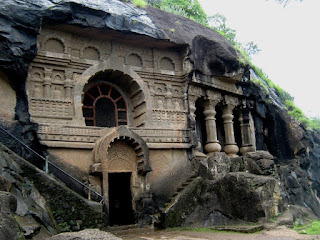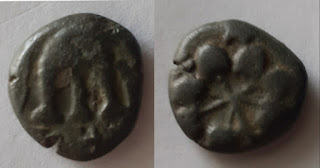The Satavahana Dynasty reigned from the mid first century BC to the end of the third century AD. They initially established their hold around the Pratishthana (modern Paithan) in the Western Deccan, and expanded from there into the Eastern Deccan, modern day Andhra Pradesh, Telangana and Maharashtra. The term "Satavahana" originated from Prakrit which means "driven by seven" which is an implication of the Sun God's chariot that is driven by seven horses as in the Hindu mythology. Satavahanas are referred to as Andhras in the "Puranas".
Their capital cities varied at different times. Pratishthana (Paithan) and Amravati were the capital of the Satavahana Dynasty. Sirimukha was the founder. They were amongst the first native Indian rulers to issue their own coins with the portraits of their rulers. This was started by Gautamiputra Satkarni who derived the practice from the Western Satraps after defeating them. The coin legends were in Prakrit language. They supported both Buddhism and Brahminism. They successfully defended their territories against foreign invaders and had many on-going battles with the Sakas (Western Satraps)
Junnar Lion, Satavahana
Satavahana Empire
The important rulers were,
Satkarni I (70-60 BC). He was the third king who expanded his empire by military conquests and conquered Kalinga, Patliputra, Godavari valley and the present-day Madhya Pradesh.
Gautamiputra Satkarni (106-130 AD). He is considered the greatest king of the dynasty who defeated the Greeks, Pahlavas (Indo Parthians) and the Sakas. He also defeated Nahapana, an important king of the Western Satraps.
The coins were excavated from the Deccan, Vidarbha and the western and eastern ghats. Most coins were die-struck though cast-coins too existed. There were silver, copper, lead and potin coins in the Satavahana Empire. The portrait coins were mostly in silver and some in lead. Many bore the names of "Satkarni" and Pulumavi". Many symbols that appeared on these coins include chakra symbol, lotus, nandipara, Swastik, six arched hill, Ujjaini, tritantra, conch shell, taurine, tree and animal symbols.
Pilamavi IV is considered as the last king who ruled till 225 AD. After his death the empire fragmented into smaller kingdoms.
Obverse; King's bust right, with elaborate hairdo, Brahmi legend around: Rano Vasithiputasa Sri Pudumavisa
Reverse: Ujjain symbol and six-arched hill, river below. Telugu legend, Arahanaku Vahitti Makanaku Siva Tiru (Pulumaviku)
Obverse: Elephant facing right.
Reverse: Tree in railing.
Obverse: Elephant with raised trunk standing, with Brahmi legend above.
















Another masterpiece.Thanks for the enlightenment
ReplyDelete